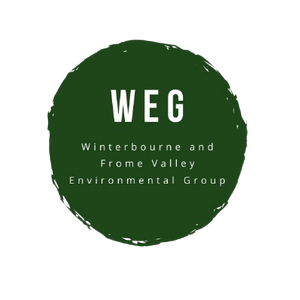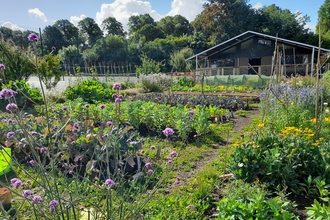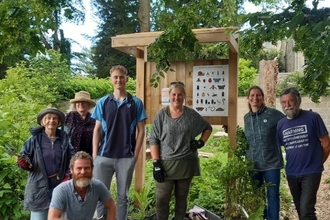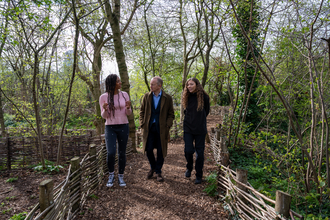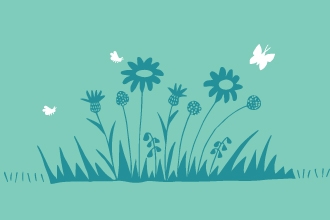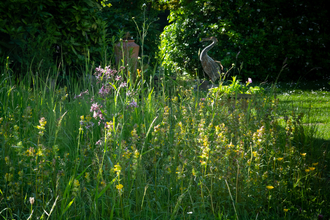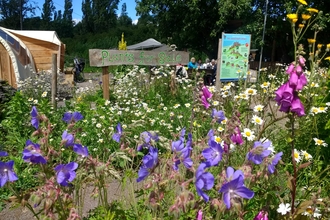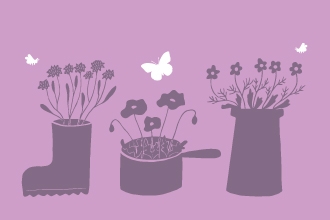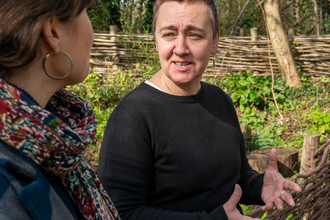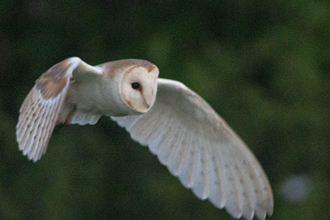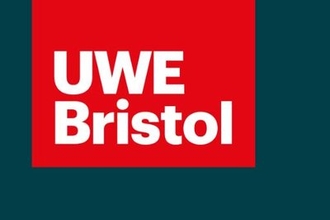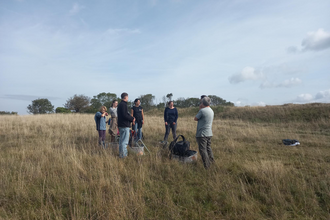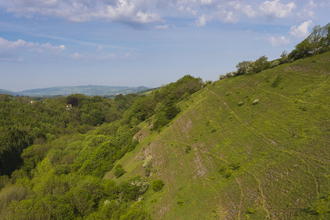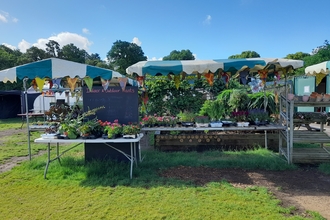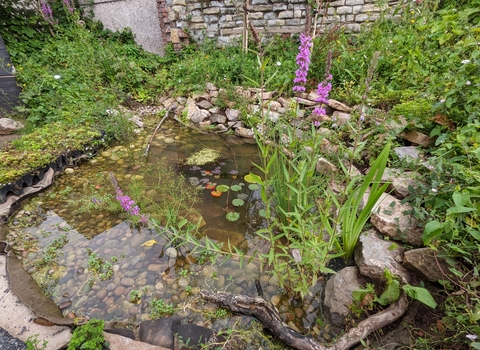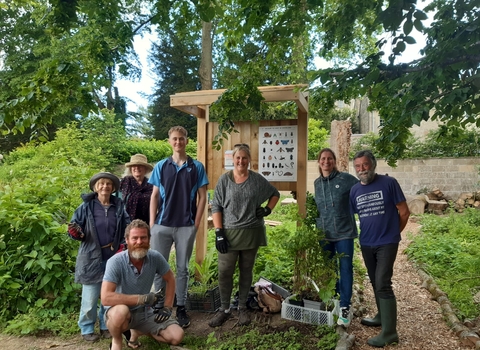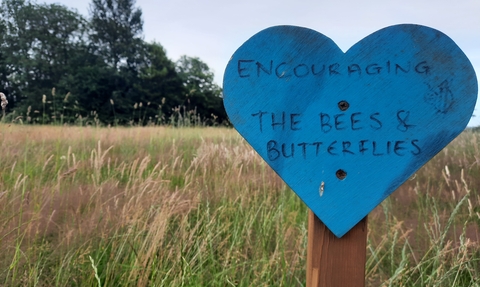
Winterbourne and Frome Valley Environmental Group
Winterbourne and Frome Valley Environmental Group
Creating the Community Environmental Group
In 2019, the Winterbourne and Frome Valley Environmental Group (known as WEG) was created in response to the need to do something locally for the climate and ecological emergencies. They are a community action group in South Gloucestershire, aiming to think globally and act locally. With over 200 group members today, active community projects and links with the local parish council and nearby community groups – they are an inspiration group getting things done.
The 2018 IPCC Report was particularly alarming for Laura Fogg-Rogers (Co-chair of WEG) and she felt something had to be done for our very near future for us and our children. Protects were happening, by organisations like Extinction Rebellion Bristol.
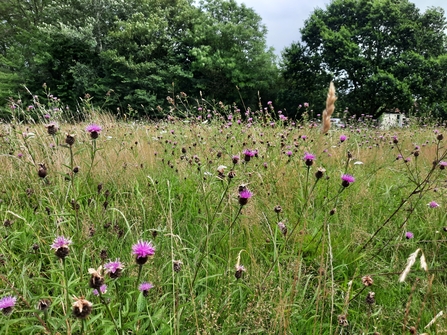
Winterbourne and Frome Valley Environmental Group
ADVICE TO GET LIKE-MINDED PEOPLE TOGETHER: Laura took the brave step of posting on a local Facebook group that she wanted to something in response to the nature and climate crisis in the local community. This lead to an informal meeting in a local pub with the people that commented on the Facebook post and discussing ideas of what they could and wanted to do.
They discussed ideas and issues important to them and the community, such as:
- Making it easier to walk and cycle
- Education about energy saving
- Wildflower meadows and increasing biodiversity opportunities
- Kids clubs
Projects Started to Benefit People and Wildlife Locally
- Living Streets – to make walking and cycling safer
- Community Climate Action
- Wildflower Meadow (see below)
- Share and repair café
- Plastic reduction
- Dingle Nature Reserve Working Parties
- River Frome and Bradley Brook BART Beacon – working to improve local water health.
- Litter Picking
Read more about these impressive WEG projects.
Wildflower Meadow on the Small Common at Whiteshill
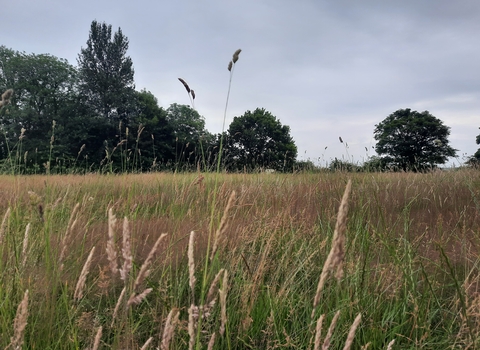
Winterbourne and Frome Valley Environmental Group
How to Start a Wildflower Meadow in the Community
One of the objectives created by WEG was to start a wildflower meadow on a local site - Small Common at Whiteshill.
The first task was to find out who owned the land.
RESOURCE: Find out who owns the land
The local Parish Council were the owners. Next task: how do you speak to the local Parish Council?
WEG found out when the next parish Council was taking place and asked to present their plan for the wildflower meadow at it. Daunting as this sounds, it is an opportunity to speak directly to the people that make decisions on such matters.
ADVICE from Laura about messaging the council: Keep going. It took 6 months and 20 emails!
Laura went to South Gloucestershire council to declare the climate emergency. Laura stood up at an official meeting and made a statement.
South Gloucestershire Council Climate and Ecological Emergency
Winterbourne Parish Council agreed a plan to turn part of the Small Common into a wildflower meadow, with the aim of improving local biodiversity as well as improving local amenity and providing opportunities to increase ecological awareness. The mowing regime was altered accordingly.
Find out when the next South Gloucestershire Community Forum meeting is held.
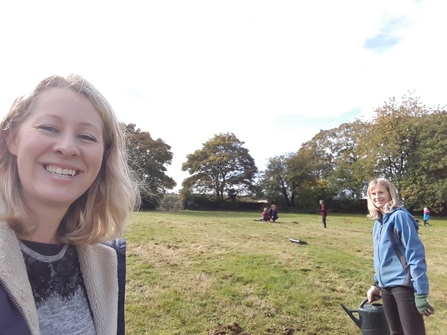
Winterbourne and Frome Valley Environmental Group
Funding to Progress Further Action
Now that WEG were taking action and getting somewhere, they needed funding to do more. There was a challenge in how to get funding.
ADVICE: WEG classified themselves as a ‘Constituted Society’. They are not a CIS (Community Interest Company) or charity (yet). This classification enabled them to get insurance and open a group bank account with Nationwide. They also linked this account with the Frome Valley Growing Project to save on resources.
Grants were given from UWE and the Quartet Foundation.
Wildflower Meadow Surveys and Local Volunteers
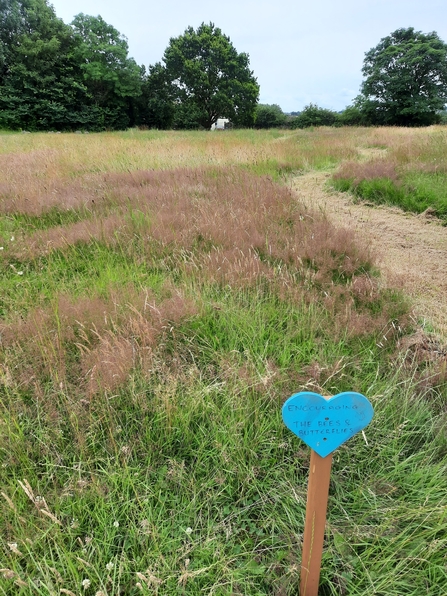
Winterbourne and Frome Valley Environmental Group
The wildflower meadow proposal was approved in February 2020 – we all know where this timing is heading! Plus plants for the meadow had been purchased from Grow Wilder. Volunteers and local residents did a consultation on the site (keeping a distance from one another) and local opinion said no to creating the meadow due to the looming covid fears and restrictions.
The decision was made to let the site grow until October 2020 to see what was there already.
The Power of Surveying
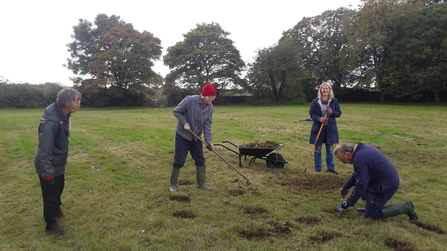
Winterbourne and Frome Valley Environmental Group
A member of the group was luckily a biodiversity survey expert and identified 60 plant species on the site before the work was carried out. This is powerful to know, especially when assessing the impact of planting wildflowers has. Having a base line figure will prove biodiversity increases, useful for locals for motivation, future funders and also the council insisted on getting the survey done at a cost of £100.
This also highlights speaking to people to find local talents that can be used within the group.
POTENTIAL BARRIER: Getting a survey could be a barrier to some groups as charging for a survey can be a lot of money. Help may be available from local groups though, so it is worth asking for local help to find survey help.
RESOURCE: North Somerset Rewilding Champions Surveying and Identification Resources
Wildflower Species List
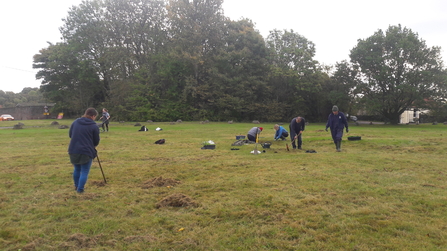
Winterbourne and Frome Valley Environmental Group
Wildflower Meadow Management
A work party together was created in Autumn 2020, to comply with the fluctuating covid restrictions. The group planted wildflower plugs:
Yellow Rattle, Mallow, Toadflax, Cowslip, Self Heal, Kidney Vetch, Field Scabious, Wild Marjoram, Salad Burnet, Clustered Bellflower.
To keep the wildflower meadow more natural, some grass is removed to make way for yellow rattle, which prevents the grass from taking over. Seeds are scattered and plant plugs are not planted in neat lines.
Why Scyth?
Scything is a traditional method of cutting grass: training and tools are required. To encourage and maintain a biodiversity rich meadow, scything is a popular and efficient tool to mow small and large grassland areas. Scything is less disruptive to wildlife compared with mowers.
Scything is much better to maintain biodiversity, as small creatures can escape (as opposed to strimmers). This means we will still have thriving insect life to support the important house martin colony at Hambrook School.Winterbourne and Frome Valley Environmental Group
Signage and Communication
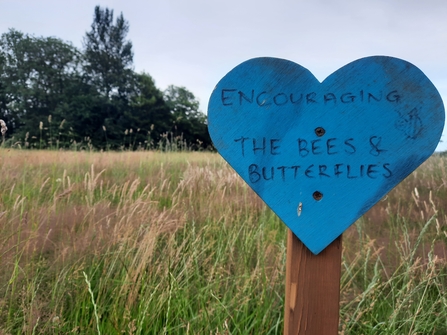
Winterbourne and Frome Valley Environmental Group
Signage and Communication
to encourage more local volunteers from the community and to communicate what was happening, digital communications helped:
- Winterbourne Environmental Group Facebook page
- Winterbourne and Frome Environmental Group Website
- Email list managed
Physical signage was also put up on site to help communicate and educate.
Information about the wildflower meadow was also sent to local magazines and posters were put up in the local library. St Micheals Winterbourne church also communicated this in their newsletters.
WEG started to meet with other local groups, such as the Frome Valley Growing Project, to discuss actions being taken and share potential resources, There are many more local groups connected by the river.
Tips to Create and Grow your Community Group:
Find local keen people, make it fun and sociable, get as many people involved to keep it going. You cannot do everything yourself.Winterbourne and Frome Valley Environmental Group
Resources
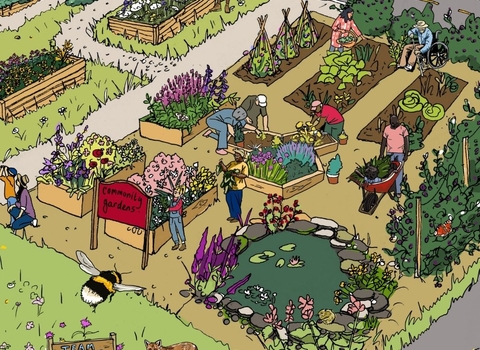
(C) Hannah Bunn
Be part of Team Wilder
All actions for nature collectively add up and creates life for people and wildlife.
Share your actions for nature, like Tom by sharing and tagging @avonwt on social media and
Log your actions for nature on the map

